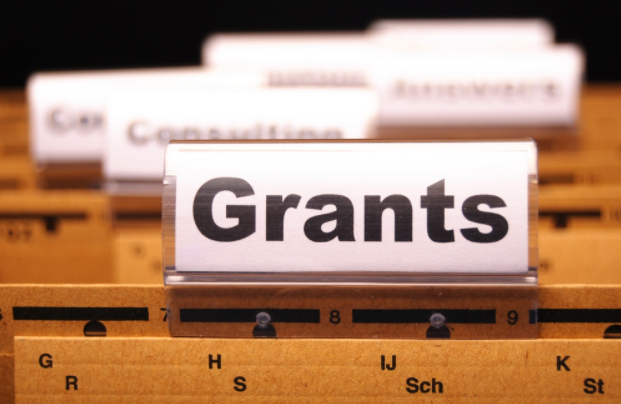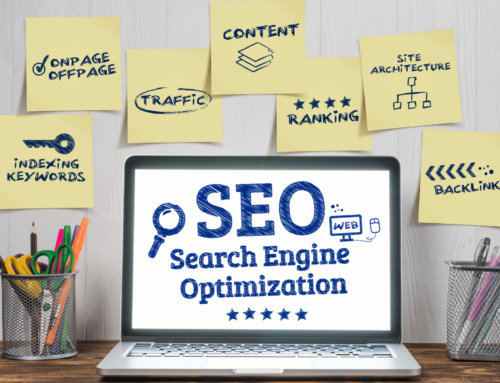Grants are among the trickier parts of funding any organization. They are often misunderstood as either the solution to all of your nonprofit’s funding problems or some far off opportunity that is only available to those who know the right people. However, neither of these assumptions are entirely true. There are countless grants available to any and every sort of nonprofit organization, regardless of who you know. Foundations, corporations, and governments are ready to help fund organizations whose missions align with theirs. All you need are the right tools to find the grants that complement the goals of your organization.
Seeing this need, we’ve compiled a list of tips and a list of foundations themselves to help you find the grants that will propel your organization forward. Here are our tips:
First, apply for the Google Grant.
Google’s $10,000/month of advertising is a great opportunity for any nonprofit, regardless of what industry you’re in. It’s a great way to have a strong online presence, and a very cost-effective way to supplement your marketing strategy. And if you need some help managing your ad campaigns — that’s what we specialize in. Feel free to connect with us to see if we can help you.
Talk to your board.
Bring everyone in on the search. This can be helpful for a couple of different reasons: One, your board members may be involved with a foundation or corporation that has grant opportunities available. If your nonprofit already has some sort of relationship with the foundation, it is true you are more likely to receive a grant. However, don’t worry if you don’t already have such a relationship; we will tell you how to develop one later.
Create a budget.
Building a detailed budget will help you understand your organization’s needs and where to go to try to look for grants. The grant search process is a very detailed one. Being as specific as possible about your needs and goals as an organization will help you narrow your search and submit the best proposals to foundations. If what you need is money to renovate an office space, look specifically for grants tailored to that need. Grant criteria differs based on the type of grant you are applying for.
When submitting proposals for grants, make sure to diversify your sources. It is recommended that one single grant should not account for too much of your organization’s funds, so the loss of any one grant will not be disastrous for your organization. The more sources of funding you have, the more stable your budget will be.
Understand the role of a grant.
Do not make the mistake of believing that receiving a grant will solve all of your organization’s problems. Grants actually make up a very small percentage of the money given to organizations annually. A 2015 study done by Giving USA found that foundations gave only 16% of money donated to organizations, while individual donors gave over 71%. So don’t spend a disproportionate amount of time looking for grants. Experts suggest that foundational and corporate giving make up only 25% of your organization’s funding — the rest should be from individual donors.
Keeping that in mind, the best advice we can give when looking for grants is to first look locally. It is crucial for you to develop a solid relationship with the community you serve. If anyone is going to consider you as a grant recipient, they need to know who you are. Your organization’s name should be out there and well known within the community. This will give your organization a level of credibility that is crucial for the growth of your donor base, especially if you want to grow that base nation-wide.
When you’ve found a grant that you think you should apply for, make sure that your organization meets all of the criteria laid out by the grant. All foundations offering grants have a mission of their own that they are working towards, and the more accurate and precise you can be about the way your organization aligns with their goals, the greater your likelihood of receiving the grant. More research on the front end will save you a lot of time and anxiety on the back end.
If you’ve already connected locally and feel like your organization is ready to shoot for the bigger grants, we’ve done a bit of research for you and compiled a list of the 25 most generous foundations in the country. Below each is a short synopsis of their mission and priorities. The summaries come directly from the foundations, and also include the level of specificity with which each foundation defines their mission:
1. Bill & Melinda Gates Foundation
The issues we engage in are wildly disparate, but they share the characteristics of being deeply rooted, dynamic, and complex. None will be solved easily and quickly, and none will be solved through our efforts alone.
We do all of our work in collaboration with grantees and other partners, who join with us in taking risks, pushing for new solutions, and harnessing the transformative power of science and technology. We strive to engage with our grantees and partners in a spirit of trust, candid communication, and transparency. Our collective efforts also depend on the support and resources of governments, the private sector, communities, and individuals. – Bill & Melinda Gates Foundation
We work and make grants in seven interconnected areas that together, we believe, can help challenge inequality: Civic Engagement and Government, Creativity and Free Expression, Equitable Development, Gender, Racial and Ethnic Justice, Inclusive Economies, Internet Freedom, Youth Opportunity and Learning. – Ford Foundation.
The Getty Foundation supports institutions and individuals committed to advancing the greater understanding and preservation of the visual arts in Los Angeles and throughout the world. We do this through grant initiatives that increase access to museum collections, strengthen art history as a global discipline, advance conservation practice, and support current and future leaders in the visual arts. We carry out our work in collaboration with the other Getty programs — the J. Paul Getty Museum, the Getty Research Institute, and the Getty Conservation Institute. Since 1984, we have awarded more than 7,500 grants benefiting over 180 countries on all seven continents. – J. Paul Getty Trust
4. The Robert Wood Johnson Foundation
At the Robert Wood Johnson Foundation, we are working to help broaden the discussion about what shapes health, and set a new standard of health, equity and well-being for all communities. Through a wide array of grant programs, we engage policymakers, business leaders, community groups and many other stakeholders with a common interest in making it easier for everyone to get and stay healthy. – The Robert Wood Johnson Foundation
The W.K. Kellogg Foundation was established in 1930 by breakfast cereal pioneer W.K. Kellogg, who defined its purpose as “…administering funds for the promotion of the welfare, comfort, health, education, feeding, clothing, sheltering and safeguarding of children and youth, directly or indirectly, without regard to sex, race, creed or nationality….” To guide current and future trustees and staff, he said, “Use the money as you please so long as it promotes the health, happiness and well-being of children.”
The foundation receives its income primarily from the W.K. Kellogg Foundation Trust, which was set up by Mr. Kellogg. In addition to its diversified portfolio, the trust continues to own substantial equity in the Kellogg Company. While the company and the foundation have enjoyed a long-standing relationship, the foundation is governed by its own independent board of trustees.
Over the years, the Kellogg Foundation’s programming has continued to evolve, striving to remain innovative and responsive to the ever-changing needs of society. Today, the organization ranks among the world’s largest private foundations, awarding grants in the United States, Mexico and Haiti. – W. K. Kellogg Foundation
6. The William and Flora Hewlett Foundation
We make grants to a broad range of institutions — from research universities contributing to public knowledge and performing arts centers engaging local diverse communities, to grassroots organizations representing millions of individuals and multilateral groups working on international development.
At any one time, more than 1,350 of our grants are active. In 2016, the foundation awarded $414,987,000 in grants and disbursed an estimated $419,000,000 in grant payments. As of December 31, 2016, the foundation’s assets were approximately $9 billion. View our financial statements and public disclosures, as well as grantmaking FAQ. – The William and Flora Hewlett Foundation
We consider proposals in three program areas: community development, education and religion. We also are interested in initiatives that benefit youth and that promote the causes of philanthropy and volunteerism. – Lilly Endowment Inc.
8. The David and Lucile Packard Foundation
We support leaders and institutions working on issues our founders cared about most: fighting climate change, providing access to health and early learning, advancing reproductive health and rights, ensuring a better future for the ocean, empowering the next generation of scientists and engineers, supporting local communities, preserving and protecting the North American West, gaining knowledge through science, and helping our farmers protect our planet and nourish the world. – The David and Lucile Packard Foundation
9. Gordon and Betty Moore Foundation
Gordon and Betty Moore established the foundation to create positive outcomes for future generations. In pursuit of that vision, we foster path-breaking scientific discovery, environmental conservation, patient care improvements and preservation of the special character of the San Francisco Bay Area. – Gordon and Betty Moore Foundation
10. The John D. and Catherine T. MacArthur Foundation
The John D. and Catherine T. MacArthur Foundation supports creative people, effective institutions, and influential networks building a more just, verdant, and peaceful world. MacArthur is placing a few big bets that truly significant progress is possible on some of the world’s most pressing social challenges, including over-incarceration, global climate change, nuclear risk, and significantly increasing financial capital for the social sector. – The John D. and Catherine T. MacArthur Foundation
11. The Andrew W. Mellon Foundation
The Andrew W. Mellon Foundation endeavors to strengthen, promote, and, where necessary, defend the contributions of the humanities and the arts to human flourishing and to the well-being of diverse and democratic societies. To this end, it supports exemplary institutions of higher education and culture as they renew and provide access to an invaluable heritage of ambitious, path-breaking work. The Foundation makes grants in four core program areas: Higher Learning; Arts and Culture; Public Knowledge; and Humanities in Place. – The Andrew W. Mellon Foundation
Bloomberg Philanthropies works to ensure better, longer lives for the greatest number of people by focusing on five key areas: the arts, education, the environment, government innovation, and public health. – Bloomberg Philanthropies
13. Silicon Valley Community Foundation
SVCF offers grants to eligible organizations through our strategic grantmaking focus areas: Economic Security, Education, Immigration and Building Strong Communities. – Silicon Valley Community Foundation
14. The Leona M. and Harry B. Helmsley Charitable Trust
We strive to make a meaningful impact in our focus areas, employing not only our significant financial assets, but also a rigorous and results-oriented approach. We are committed to close and productive partnerships with our grantees, as well as with other funders and impact players in government, academia, and the private sector who share our interests and goals. And we endeavor to be forward-thinking in every aspect of our work, which includes taking risks that others cannot or will not when we conclude that the risk/reward trade-off warrants investment. The Helmsley Charitable Trust aspires to improve lives by supporting exceptional efforts in the U.S. and around the world in health and select place-based initiatives. – The Leona M. and Harry B. Helmsley Charitable Trust
15. The Rockefeller Foundation
The Rockefeller Foundation’s mission — unchanged since 1913 — is to promote the well-being of humanity throughout the world. Today, we pursue this mission through dual goals: advancing inclusive economies that expand opportunities for more broadly shared prosperity, and building resilience by helping people, communities, and institutions prepare for, withstand, and emerge stronger from acute shocks and chronic stresses. To achieve these goals, we work at the intersection of four focus areas — advance health, revalue ecosystems, secure livelihoods, and transform cities — to address the root causes of emerging challenges and create systemic change. Together with partners and grantees, The Rockefeller Foundation strives to catalyze and scale transformative innovations, create unlikely partnerships that span sectors, and take risks others cannot. – The Rockefeller Foundation
16. Tulsa Community Foundation
What we do: stimulate nonprofit investment in technology by offering support services at 25%–50% of their market cost, emergency assistance and disaster relief, and medical assistance programs. – Tulsa Community Foundation
The California Endowment’s mission is to expand access to affordable, quality healthcare for underserved individuals and communities and to promote fundamental improvements in the health status of all Californians. – The California Endowment
The Kresge Foundation is a $3.5 billion private, national foundation that works to expand opportunities in America’s cities through grantmaking and social investing in arts and culture, education, environment, health, human services, and community development in Detroit. – The Kresge Foundation
Since 1924, The Duke Endowment has worked to help people and strengthen communities in North Carolina and South Carolina by nurturing children, promoting health, educating minds, and enriching spirits. – The Duke Endowment
The Open Society Foundations work to build vibrant and tolerant democracies whose governments are accountable and open to the participation of all people. – Open Society Foundations
21. Robert W. Woodruff Foundation, Inc.
The Foundation seeks to improve the quality of life in Georgia. We pursue our mission by responding to community needs, typically making grants to well-established institutions and projects with strong leadership and a broad base of support. – Robert W. Woodruff Foundation, Inc.
22. Margaret A. Cargill Foundation
To provide meaningful assistance and support to society, the arts, and the environment. – Margaret A. Cargill Foundation
23. Carnegie Corporation of New York
Established in 1911 by Andrew Carnegie to promote the advancement and diffusion of knowledge and understanding. In keeping with this mandate, the Corporation’s work focuses on the issues that Andrew Carnegie considered of paramount importance: international peace, the advancement of education and knowledge, and the strength of our democracy. – Carnegie Corporation of New York
24. The Wells Fargo Foundation
Wells Fargo is committed to building an inclusive, sustainable future for all through a focus on opening pathways to economic advancement, championing quality, affordable homes, empowering small businesses to thrive, and driving an equity-focused transition to a low-carbon economy. – The Wells Fargo Foundation
25. The Annie E. Casey Foundation
The mission of the Annie E. Casey Foundation is ambitious: to improve the futures of millions of disadvantaged children and their families.
To achieve results, we focus on developing solutions to build a brighter future for children, families, and communities. As such, our grant-making strategies advance research and solutions to overcome the barriers to success, help communities demonstrate what works, and influence decision makers to invest in strategies based on solid evidence. – The Annie E. Casey Foundation
As you can see, each foundation has its own strategic priorities. As you do your research, it is in your best interest to ensure that your organization’s mission and work align with that of the grant you are applying for. And these 25 are far from a complete list of grants available. We’ve compiled a few different search engines you can utilize in your search to find other grants here:
Grant funding is a vast and complex field. Don’t worry if you’re overwhelmed; start simple (yet impactful) with the Google Ad Grant, available to nearly all 501(c)3 nonprofits. Then, in your further research, remember to remain precise and start locally. You’ll do great. Happy searching!









